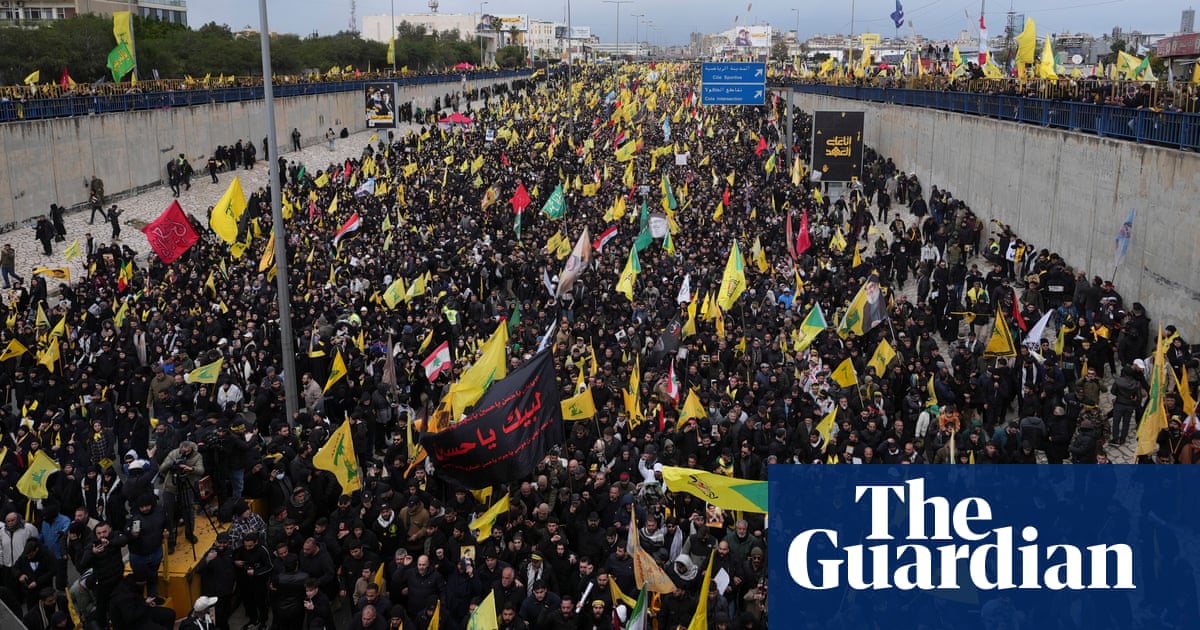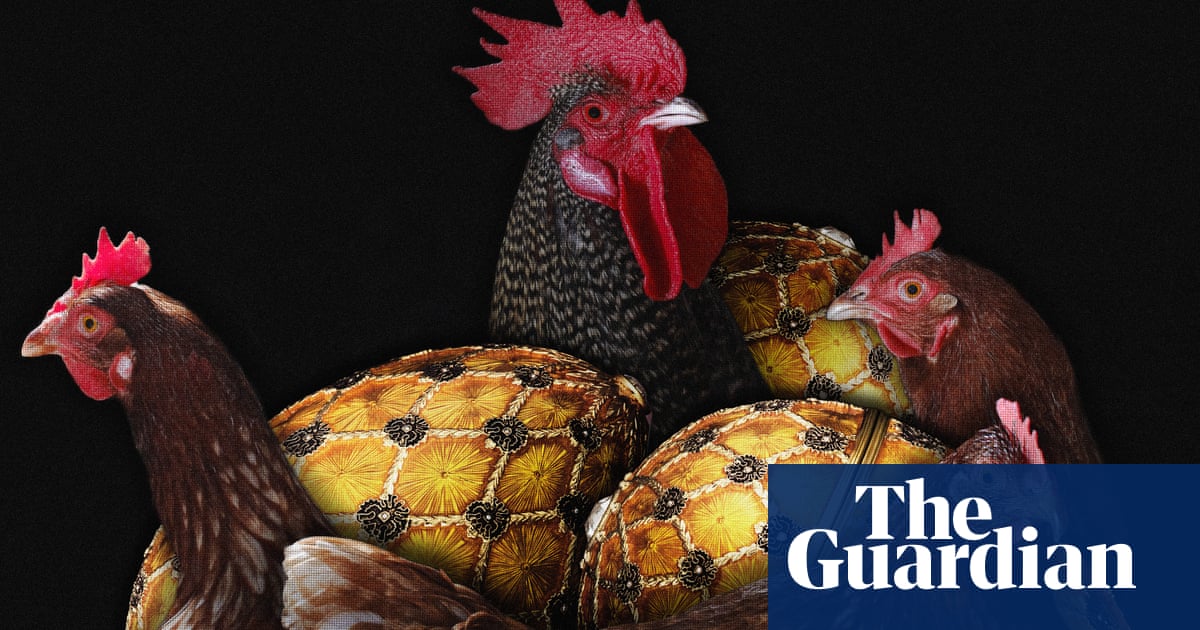At Alta Vista, a ranch in Concepción, Bolivia, a herd of cattle grazes under a smoky sky. Workers had been fending off fires for weeks, says Hermes Justiniano, the ranch’s general coordinator, as he rustles dry foliage with his boot. “It has been months since there was good rain.”
That was in September, midway through Bolivia’s worst fire season on record, for which ranching and industrial agriculture are the main culprits. Alta Vista is one of a few ranches in Bolivia on a mission to make the business more sustainable. It faces an uphill task in a country where public policy and the law incentivise the most destructive form of agribusiness.
Bolivia has the third highest rate of loss of primary forest in the world, after Brazil and the Democratic Republic of the Congo. This year, fires burned more than 10m hectares (24.7m acres) – an area larger than Portugal.
A recent report found that ranching was responsible for 57% of all deforestation in Bolivia between 2010 and 2022. “It is the principal sector driving this disaster,” says Stasiek Czaplicki, an environmental economist.

Deforestation affects not just the Amazon rainforest, of which roughly 8% is in Bolivia, but also dry forests, such as the Chiquitanía, which are vital carbon sinks.
Yet business is booming. The governing Movimiento al Socialismo (Movement towards Socialism, MAS), a leftwing political party of former president Evo Morales and incumbent Luis Arce – now declared enemies – has worked with agribusiness elites to encourage exports.
From a low base, beef exports are rising sharply. Since demand is only growing, campaigners are searching for ways to reduce beef’s environmental impact in Bolivia.
On the road to Alta Vista, Justiniano points out paddocks with little pasture and skinny cattle. Some are scattered with carcasses: desiccated hides pitched like tents over bones, victims of the drought that affected much of the region, caused by El Niño and human-driven global heating.
In Bolivia, ranching generally involves leaving cattle in vast spaces with little fencing, says Justiniano. This means cattle graze selectively, picking out the green shoots and quickly degrading the pasture. Such setups can require numerous hectares for every animal.
“All of this has been deforested – and look how few cattle there are,” says Justiniano. “It’s a kind of crime against nature.”
In this type of management, land produces less pasture within five years and degrades within 10, says Justiniano. Cattle no longer gain enough weight, and ranchers look for new land.

At Alta Vista they take a different approach, letting the land rest and diversifying the pasture, frequently moving cattle between smaller paddocks, and combining grasses with, for example, legumes and even weeds. It also means not disturbing the soil’s structure, conserving roots, and avoiding the use of anti-parasitic medicines that kill worms and beetles.
As a result, the soil stays healthy and the pasture rich, allowing farmers to use the land for much longer. Justiniano also claims to double livestock numbers by using such practices.
Alta Vista is a research ranch that works with ranchers to prove that more can be done with less, and that they don’t need to destroy the forest to create more pasture because their fields are failing.
In Beni, in the north of Bolivia, Armonía, a conservation organisation, is developing another sustainable ranching model in the natural grasslands of the pristine Amazon watershed.
Armonía bought the Barba Azul reserve in 2008 to protect the critically endangered blue-throated macaw. While looking for a way to conserve the land and generate income to sustain the project, it landed on ranching.
“Ranching can be positive for conservation,” says Tjalle Boorsma, preservation programme director at Armonía. “Natural grassland systems like these do not require land use change. You’ve got the grass; you put a cow in it, and Bob’s your uncle.”
Armonía employs principles similar to those at Alta Vista, focusing on productive investments and primary data collection to fine-tune practices tailored to grasslands.
Its methods contrast with general practices in Beni, where natural grasslands are often converted into single-species pastures that decline due to overgrazing, and then require frequent burning in a bid to rejuvenate the grassland. These fires can quickly get out of control, increasing the devastation.
When Armonía started, ranchers were sceptical. So it contacted Beni’s federation of ranchers to show them the results. “I’m not going to convince a rancher if I start talking about the blue-throated macaw,” says Boorsma. “I have to show them the numbers.”
after newsletter promotion

Last year, during El Niño, ranchers around Barba Azul lost, on average, 26% of their adult livestock. Armonía had a 2.6% mortality rate – a tenth of the average. And while 45% of cattle on neighbouring ranches produced calves, that number rose to 62% on Barba Azul.
Armonía and the federation of ranchers have formed La Alianza Eco-Ganadera de Beni (the Beni Eco-Livestock Alliance) to spread the practices across the region. They aim to start a certification for “deforestation-free” beef that could sell at a premium – even if it would require completing the cow’s life cycle in the grasslands, as opposed to sending them to be fattened on deforested ranches in Santa Cruz before slaughter, as currently happens.
Wolf Rolón Roth, an agricultural engineer specialising in rural development, says that the practices used at Alta Vista and Barba Azul have been proven to be better for the environment. “The soil is fundamental for making money,” says Rolón Roth. “A capitalist should not allow an asset like that to deteriorate. The same is true for air, for water, for biodiversity.”
However, the practices are yet to be taken up by Bolivian ranchers en masse.
Alta Vista and Barba Azul say their ranching models are not only better for the environment, but also increase productivity. Together, Barba Azul and the group of ranches to which Alta Vista belongs farm 33,000 hectares (82,000 acres). Boorsma says the goal of the new alliance is to increase that to 100,000 hectares in the next two years, which is a start – but there is still a long way to go in Bolivia, where ranching takes up 10m hectares.
Rolón Roth says this reflects a lack of institutions to spread agricultural best practices. Bolivia has no equivalent of Embrapa in Brazil or INTA in Argentina. Another factor is investment: implementing best practices requires it, but many in Bolivia seem to prefer low-investment, low-risk ranching, even if it is less productive, he says.

Justiniano and Boorsma suggest that if more ranchers were aware of the benefits of regenerative practices, they would adopt them. “We are trying to do what the government does not,” Justiniano says, criticising the state’s failure to advocate for best practices.
However, both experts acknowledge that best practices, regenerative or otherwise, require investment, while many in Bolivia seem to prefer low-investment, low-risk ranching – even if it is less productive.
A study by the Santa Cruz chamber of exporters found that 58% of small producers reported using best practices, as did 70% of big producers. However, only 35% thought they were key to profitability.
Another study in the Chiquitanía estimated that only 20% of local ranching combined industry best practices with the resources to implement them, intensifying ranching rather than expanding. In a country where forest land is cheap and abundant, deforesting boosts its value, so ranching is used as an affordable way to occupy the land, with little regard for optimal management.

Organisations such as the Conservation Strategy Fund, Foundation for the Conservation of the Chiquitano Forest and Consorcio Regional de Experimentación Agropecuaria, have promoted structural changes that disincentivise the conversion of forest to farmland in Bolivia, cutting off the supply of cheap land.
That means, for instance, controlling the free distribution of public forest lands, altering legislation that fosters wildfires and deforestation, and halting inexpensive loans that fund the clearing of forests. Only then, says Justiniano, will the economic calculus tilt in favour of investing in existing farmland.
“Cheap land keeps the model going,” he says. “Many people think there is still lots of forest in Bolivia, that we can keep doing it this way for another 20 or 30 years – but there isn’t.”

 2 months ago
53
2 months ago
53













































